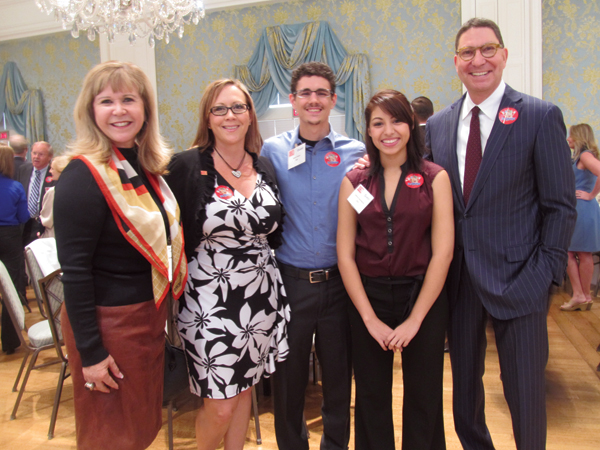By Patsy Fretwell
During the 1960s, retailers categorized an “average American” and focused on selling products to that person. However, there is no “average American,” according to Scott McClelland, president of H-E-B’s Houston division. McClelland explained to his audience at the Houston Gulf Coast CCIM chapter’s October luncheon that Houstonians are a diverse group and retailers have to re-think business models to reach different consumers. McClelland noted two of HEB’s marketing strategies: offering the lowest price and selling items competitors don’t. “H-E-B invests lots of time to find out what people want, and low prices matter very much,” he said. H-E-B price shops more than 50,000 items with their competitors to make sure their prices are lower.

Pictured from left to right at the CCIM October luncheon: Cyndy Garza, H-E-B; D’etta Casto-DeLeon, Grandbridge; Brent Casto, H-E-B; Jessica Quintanilla, H-E-B; Scott McClelland, H-E-B.
One example of offering something others don’t is the recent addition of Whataburger ketchup. McClelland said the addition of the ketchup, both spicy and regular, has increased HEB’s gross profit on ketchup overall from 19.7% to 26.1%.
Currently, H-E-B owns a 22% market share in Houston and McClelland is proud to note that HEB only operates stores in Texas and northern Mexico, whereas his competition is national. He referred to the recent onslaught of new smaller, national competitors as “paper cuts,” but admitted that when the competition reaches more than 30 stores, the situation could change. However, he notes that the marketing innovations and products his company utilizes will continue to convince shoppers to pass up “four other stores” to shop at an H-E-B store — until he can get more stores physically built.
McClelland stated that one major innovation that keeps H-E-B’s prices low and increases profitability is the fact that they manufacture many of their own products, from potato chips to tortillas. The H-E-B products provide a 25% overall profit as they control costs.
McClelland also addressed the difference in shopping patterns for different income groups. He said there is a changing Texas and an “erosion of the middle class,” with Texans’ household income declining. The grocer president said he visits consumers in their homes to find out what they are buying. H-E-B is facing the realities of the low-income consumer, which he described as families with income under $30,000, by opening up their newest line of stores. Joe V’s Smart Shop, which offers value above all else, “strips the costs out” and does not accept credit cards; cash transactions are handled by machines, reducing employee time by about 60 hours per week.
McClelland explained the similar but different product lines between Central Market, H-E-B and Joe V’s Smart Shop, noting that each store differentiates itself from the other for the consumer who shops there.
H-E-B is in the process of building a store at the southeast corner of San Felipe and Fountain View and will close its nearby store at Fountain View and Westheimer. The new store will be modeled on the format of H-E-B’s Montrose Market at West Alabama and Dunlavy, which received two awards from the Urban Land Institute.


